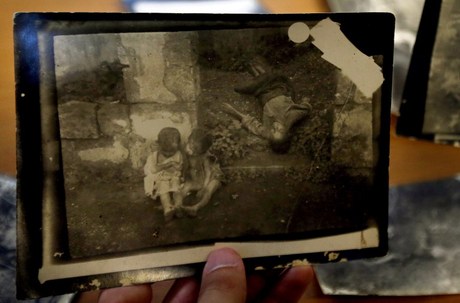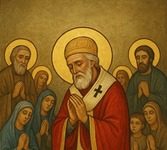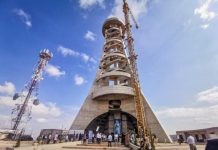A Century on, Lebanon Rediscovers Deadly Famine
Naharnet/05.05.15
Lebanon is rediscovering a century-old tragedy that most had forgotten — a devastating famine, caused by blockades and a locust infestation, that killed a third of its population. From 1915 to 1918, in the midst of World War I and before modern-day Lebanon existed, between 150,000 and 200,000 people died of malnutrition and disease, according to estimates by historians. Those who survived the famine are long gone, but recently unearthed archives offer chilling testimonies of a time when men, women, and children fed themselves on tree bark or died by the side of the road.
This famine “was the biggest catastrophe in the history of Lebanon. Even the civil war (1975-1990) did not reach this magnitude”, historian Youssef Mouawad told Agence France Presse. It hit hardest for the 450,000 residents of then Ottoman-controlled Mount Lebanon which would become in 1920 the core of modern-day Lebanon. The famine indirectly led to Lebanon’s expansion. Agricultural areas like the eastern Bekaa Valley were tacked on to Mount Lebanon and port cities to guarantee the viability of the young republic.
This year, historian Christian Taoutel and Father Pierre Wittouck released a book compiling the previously unpublished French chronicles of Jesuit priests during the famine. “The Lebanese people in the turmoil of the Great War of 1914-1918” contains harrowing accounts rarely discussed in Lebanon, where the great famine is covered in just two paragraphs in schoolbooks. People “sank to the ground, vomiting blood”, the book quotes a witness as saying. The bodies of children “were thrown among piles of rubbish”.
Rats and cannibalism –
In one of the diaries, a priest describes how in 1917 he came across the bodies of a widow and her 10-year-old son who had been dead for three days. “The rats… had gnawed at their ears and cheeks, and the little one’s belly was open,” he wrote. The book also relates stories of cannibalism, including the case of a man who had killed his children aged eight and 10 to feed himself. “The great Turkish reformist Halide Edip… said she wouldn’t dare sleep in Beirut anymore because she would hear voices screaming ‘juan, juan’ (I’m hungry, in Arabic) all night,” said Mouawad. The famine was the result of a series of factors.
“The mountainous terrain of Mount Lebanon could only feed its population four months out of the year,” said historian Issam Khalifeh.
The situation worsened when “Allied forces imposed a blockade” in the Mediterranean to cut off supplies to the Ottomans, he told AFP.
But it was the land blockade ordered by high Ottoman military ruler Djemal Pasha that truly choked off Mount Lebanon, populated mostly by Maronite Christians protected by France.
The Ottomans feared the Maronites would support the Allies in the war “so they had to starve them before they were armed”, said Khalifeh, a professor at the Lebanese University. Lebanon’s woes did not stop there. In 1915, “the year of the locust”, hordes of insects “devoured everything”, Khalifeh said. The Ottomans also requisitioned crops and pack animals to support their war effort, Mouawad said.
‘Dead are my people’ –
Mouawad said these painful years were obliterated in the minds of people because they brought up memories of shame and guilt.
“Dying of hunger isn’t heroic. It’s not like dying defending your village or in the trenches,” he said. Some Lebanese families made fortunes by reselling stockpiled food at exorbitant prices, Mouawad said.
“Women sold their bodies for a piece of bread, men sold their land for an orange.” Cholera and typhoid epidemics spread, emptying out entire villages. The famine largely fell out of Lebanon’s collective memory and official history, in part because it affected Christians more than Muslims and so did not serve as a unifying force for the young republic.
Rare pictures of the tragedy were taken by Ibrahim Naoum Kanaan, who led a charitable relief program in Mount Lebanon and who risked his life to document the horror. His shocking images — a skeletal woman devouring a morsel of bread, emaciated corpses — are a “historical treasure”, said his grandson Emile Issa el-Khoury.
“My grandfather was an unwitting hero and provided evidence of this tragedy.” The famine has lived on in Lebanese literature, including in “The Bread”, a novel by Toufic Youssef Awwad, and in “Dead are my people”, a poem by Kahlil Gibran. “They died silently, for humanity had closed its ears to their cry,” Gibran wrote. Agence France Presse





















